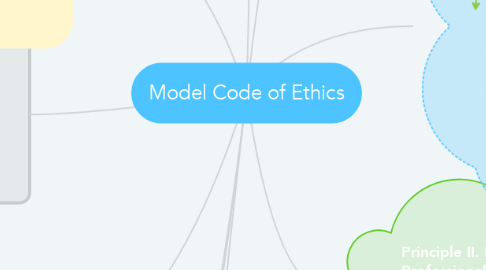Model Code of Ethics
by Antoinette Graham

1. Principle III. Responsibility to Students: Communicating with students in a clear, respectful, and culturally sensitive manner.
2. Principle IV. Responsibility to the School Community: Communicating with parents/guardians in a timely and respectful manner that represents the students' best interests.
3. Principle V. Responsible and Ethical use of Technology: Promoting the benefits of and clarifying the limitations of various appropriate technological applications with colleagues, appropriate school personnel, parents, and community members.
4. It is important that teachers not only share their classroom management plan with students in a clear, respectful way, but they should also make sure to make the procedures and rules available to parents. This is one way to connect the classroom and the home and to make parents an ally and participant in the school community.
5. It is important that teachers communicate any behavior issues that they may have with students to parents in a timely and respectful manner. For example, teachers can create behavior sheets that parents can review, sign, and have students return so the next school day. All communication with parents should be respectful and in the best interest of the students.
6. The classroom management plan should include procedures for technology use in the classroom. For example, teachers can create an online safety pledge that the teacher, the students and the parents must sign before the students are allowed to use technology. This pledge should be aligned with the school's technology policy and communicated with appropriate school personnel and colleagues.
7. Principle I. Responsibility to the Profession: Influencing and supporting decisions and actions that positively impact teaching and learning, educational leadership and student services.
8. Principle II. Responsibility for Professional Competence: Advocating for equitable educational opportunities for all students.
9. An important component of classroom management is creating a trusting environment. Teachers are responsible for ensuring all students receive equitable opportunities to succeed. If students feel they are not being heard, or that the teacher does not believe in them, this may affect the teachers ability to encourage all students to adhere to the procedures and rules of the class.
10. The first principle in the Model Code of Ethics is a responsibility to the professions. Creating and Implementing a classroom management plan certainly applies as an action that positively impacts teaching and learning. Teachers are more effective with a classroom management plan, and students are more likely to succeed in the consistent environment afforded by a class with an effective classroom management plan.


